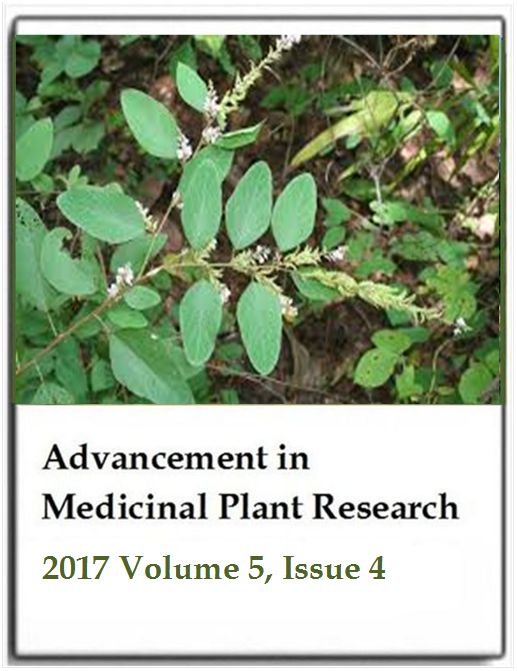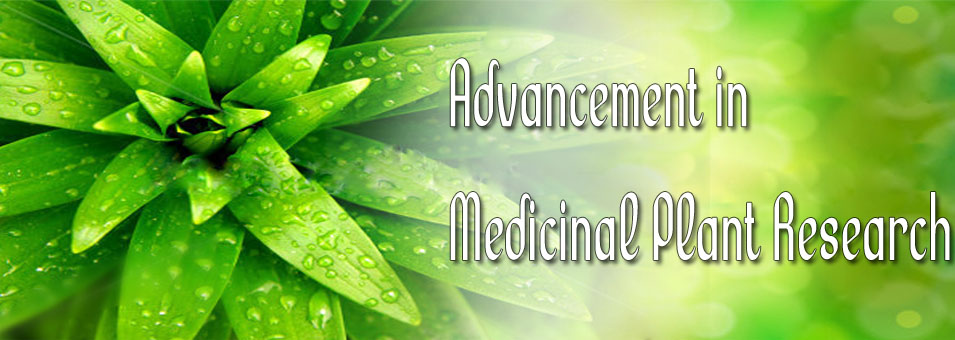Effect of Adenanthera pavonina leaves extracts and β-sito sterol glucoside in CCl4 induced hepatocellular injury in Wistar rats
Farhana Tasleem, Saad Bin Zafar Mahmood, Iqbal Azhar, Rubina Gulzar, Faheem Ahmed and Zafar Alam MahmoodAdvancement in Medicinal Plant Research
Published: October 10 2017
Volume 5, Issue 4
Pages 51-62
Abstract
The aim of this research work was to investigate the less toxic and more specific hepatoprotective and anti-oxidant effects of hexane, ethanol extracts along with pure compound β-sitosterol glucoside isolated from leaves of Adenanthera pavonina in carbon tetra chloride (CCl4) induced liver damage in rat. The anti-oxidant effect was assessed in different concentrations of 100, 250, 500 and 1000 µg/ml by in-vitro model system of ferric cyanide reducing power assay using, ascorbic acid as a standard drug. Ethanol and hexane extracts of A. pavonina 75, 150 and 250 mg/kg body weight along with pure compound β-sitosterol glucoside 25, 75 and 100 mg/kg body weight were administered orally for six days to CCl4 (1.5 ml/kg body weight in equal volume of olive oil (1:1)) treated rats and the hepatoprotective activity was assessed in prophylactic and therapeutic model using biochemical parameters aspartate aminotransferase (AST), alanine biochemical parameters like aminotransferase (ALT), alkaline phosphate (ALP), total bilirubin (TB) and direct bilirubin (DB) along with histopathological studies of liver tissues. The results were compared with standard hepatoprotective drug containing (BetaineGlucuronate + Diethanol amine Glucuronate + Nicotinamide Ascorbate). Five-days treatment of tested samples showed dose dependent reduction of CCl4 induced elevated activity of serum enzymes and total and direct bilirubin indicating the recovery of hepatic enzymes both in prophylactic and therapeutic model. However oral administration of β-sitosterol glucoside can significantly reduce the activity of ALP 183.40 IU/L, ᵞ-GT 0.60 IU/L, DB 0.04 mg/dl and ALT 30.20 IU/L, TB 0.14 mg/dl at a dose of 100 mg/kg body weight in prophylactic and therapeutic model respectively. This hepatoprotective effect was comparable to that of the standard drug. Histopathological study of animals showed intact bile duct and portal vein without any cellular necrosis and fatty infiltration. The ferric cyanide reducing power assay showed that A. pavonina possessed magnificent anti-oxidant potential in concentration dependent manner but less than standard drug ascorbic acid and among all tested samples β-sitosterol glucoside indicated highest reducing power 0.279. Results of the present study indicated presence of anti-oxidant phytochemicals in A. pavonina leaves and exhibited substantial reducing power of free radicals, responsible for promising hepatoprotective effect.
Keywords: Adenanthera pavonina, in-vivo hepatoprotective, histopathology, CCl4, in-vitro anti-oxidant.
Full Text PDF
